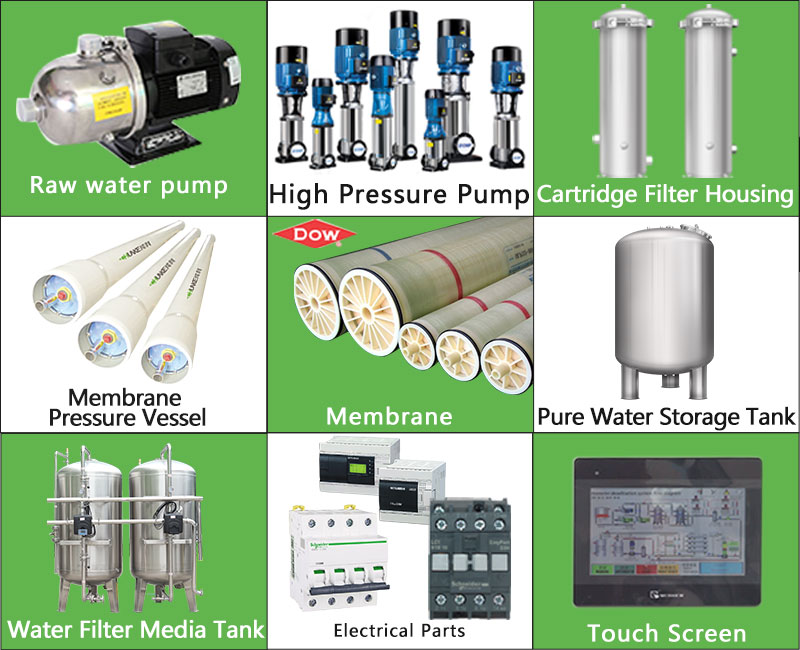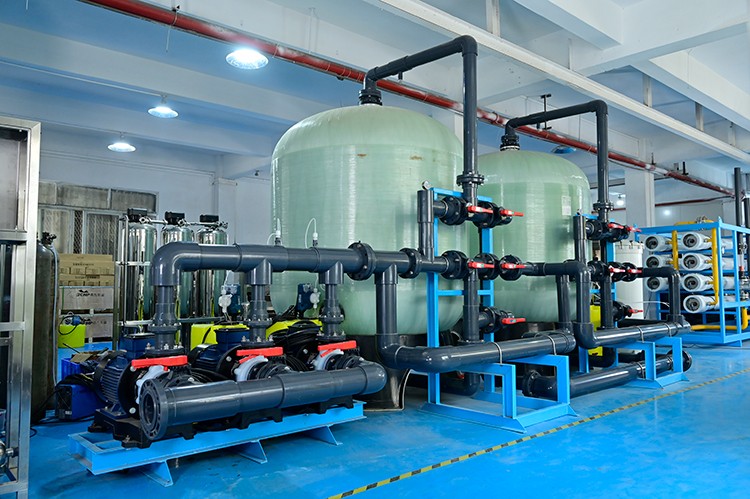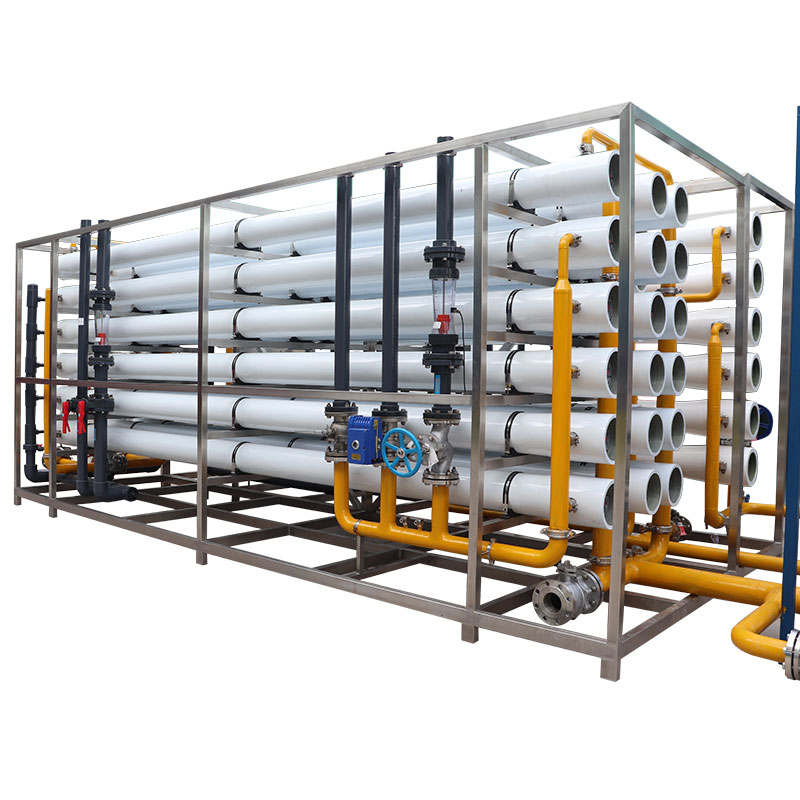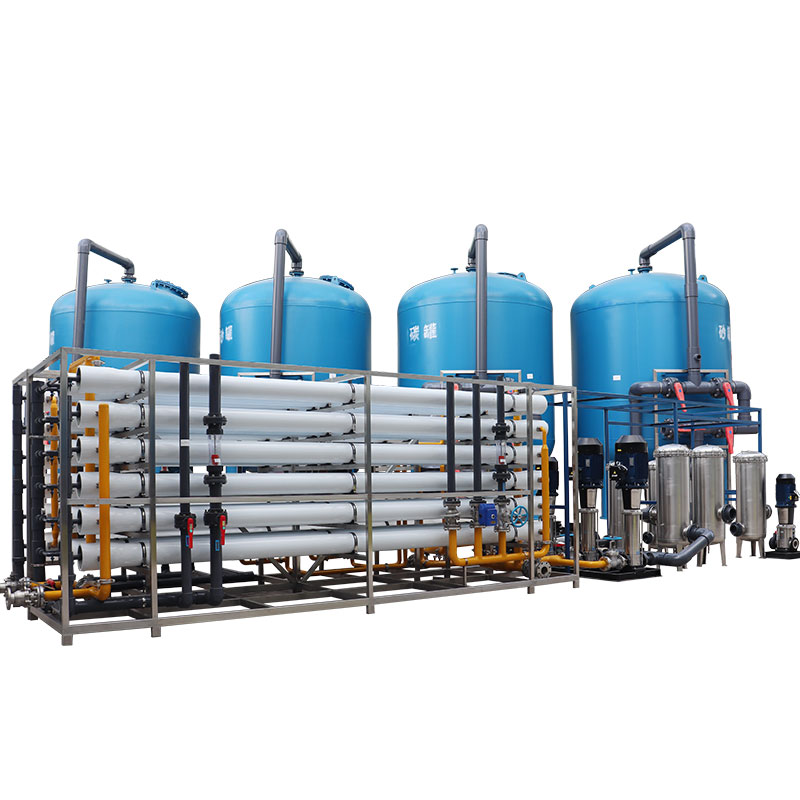What is a 10 cubic meter per hour reverse osmosis system?
Reverse osmosis (RO) technology is a highly efficient separation technology widely used in the field of water treatment, which can remove various impurities, salts and harmful substances in water. With the continuous increase in industrial demand and household water requirements, the 10 cubic meter per hour reverse osmosis system has gradually become the choice of many medium and large industrial enterprises.
So, what is a 10 cubic meter per hour reverse osmosis system? How much water and electricity does it consume? This article will analyze this in detail.

What is a 10 cubic meter per hour reverse osmosis system?
A 10 cubic meter per hour reverse osmosis system, in simple terms, is a device that can treat 10 cubic meters (ie 10,000 liters) of water in 1 hour. It usually consists of multiple components, including a pretreatment system, a reverse osmosis membrane, a pressure pump, a control system, etc., which work together to achieve the purpose of purifying water quality.
Reverse Osmosis Principle
The core working principle of the reverse osmosis system is to use a semipermeable membrane under pressure to achieve the selective passage of water molecules, while retaining most of the impurities such as salt, heavy metals, bacteria, viruses, etc. dissolved in the water on one side of the membrane, thereby producing pure water. The pore size of the reverse osmosis membrane is very small, usually around 0.0001 microns, which enables it to efficiently filter out various pollutants.
Application scenarios of 10 cubic meters per hour system
10 cubic meters per hour reverse osmosis systems are widely used in medium and large industrial fields, such as electricity, pharmaceuticals, food and beverages, and electronic manufacturing. These industries have very strict requirements on water quality, and the processing capacity of 10 cubic meters per hour can also meet their high water demand. In addition, systems of this size are also commonly used in community water supply, hotels and resorts.

What is the water consumption of a 10 cubic meter per hour reverse osmosis system?
In the operation of the reverse osmosis system, water consumption is a very critical parameter because it is directly related to the operating cost and environmental protection of the system. During the treatment process, the reverse osmosis system will produce a certain amount of wastewater, which is usually called concentrated water (concentrated water), which carries the trapped salts and impurities.
Normally, the ratio of inlet water to produced water in the reverse osmosis system is between 2:1 and 3:1, that is, about 2 to 3 cubic meters of raw water are required for every cubic meter of purified water (permeate water) produced. Therefore, the hourly water consumption of a 10 cubic meter per hour reverse osmosis system is roughly between 20 and 30 cubic meters, including 10 cubic meters of produced water and 10 to 20 cubic meters of concentrated water. The treatment of concentrated water is an important link in the reverse osmosis system. In many industrial applications, concentrated water can be treated by recycling, zero-discharge technology, and post-concentration discharge to reduce water waste and environmental pollution.
The factors affecting the water consumption of the reverse osmosis system mainly include inlet water quality, system design, operating parameters, and membrane performance. The worse the water quality and the higher the impurity content, the greater the water consumption of the system, because the system needs more water to carry away the trapped pollutants. By optimizing the system design and operating parameters, water consumption can be reduced to a certain extent.

What is the power consumption of a 10 cubic meter per hour reverse osmosis system?
Power consumption is another important parameter in the operation of the reverse osmosis system, which is mainly composed of the energy consumption of the pressure pump, the electronic control system and the auxiliary equipment. In the reverse osmosis process, water needs to pass through the semipermeable membrane, which needs to overcome the natural osmotic pressure of the water, so additional pressure needs to be applied, which is the role of the pressure pump.
In the reverse osmosis system, the power of the pressure pump is usually between 3-5 kilowatts per cubic meter of water. Therefore, for a 10 cubic meter per hour reverse osmosis system, the total power of the pressure pump is about 30-50 kilowatts. This means that under full load operation, the power consumption per hour is about 30-50 kilowatt-hours (kWh).
Power cost analysis
The power consumption of the reverse osmosis system is affected by many factors, including the quality of the influent water, the type of membrane, the operating pressure of the system, and the temperature. The worse the water quality, the greater the pressure that needs to be applied, which leads to an increase in power consumption. Similarly, temperature also affects the viscosity of water. The lower the temperature, the greater the viscosity of water, and the power consumption will increase accordingly.
Assuming that the electricity cost is $0.1/kWh, the electricity cost of a 10 cubic meter per hour reverse osmosis system running at full load for 1 hour is approximately between $3 and $5. For a system that needs to run continuously for a long time, the electricity cost is an operating cost that cannot be ignored. Therefore, in the design and operation of the system, how to optimize energy consumption is very important.

How to optimize the operating cost of a 10 cubic meter per hour reverse osmosis system?
In order to reduce the operating cost and improve the efficiency of a 10 cubic meter per hour reverse osmosis system, a series of optimization measures are usually required in design and operation. A good pretreatment system can effectively remove large particles, suspended matter and some organic matter in the raw water, reduce the burden on the reverse osmosis membrane, thereby extending the service life of the membrane and reducing water and power consumption during operation.
Secondly, choosing an efficient reverse osmosis membrane can increase the water production rate, reduce the discharge of concentrated water, and thus reduce water consumption. At the same time, the use of energy-saving membrane materials can reduce the working pressure of the system to a certain extent, thereby reducing power consumption. In addition, modern reverse osmosis systems are usually equipped with intelligent control systems that can monitor and adjust the system's operating parameters in real time to achieve optimal energy consumption and water resource utilization. This intelligent operation can not only improve the efficiency of the system, but also reduce the workload of operators.
Conclusion
The 10 cubic meter per hour reverse osmosis system is an efficient and reliable water treatment equipment, which is widely used in various industrial fields. Although its water and power consumption are large, it can achieve efficient water resource utilization and energy consumption management through reasonable design and optimization. When using this system, users should comprehensively consider water quality, energy consumption and maintenance costs to achieve the best operating effect and economic benefits.




